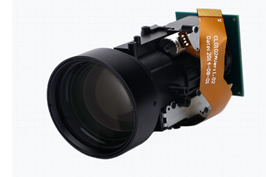The history of CHIOPT lens development can be traced back to ancient Greeks when they first discovered principles of optics. Over the years there have been so many innovations in lens development. It has revolutionized the field of photography forever. This article will explore a timeline of innovation. We will also review materials used in modern lens making. You will learn which lens is right for your photography needs. The piece will examine how lens development is changing the game. Finally, we will take a look at the future of photography.
A Timeline of Innovation
The first lenses were made out of polished crystals They were primarily used to magnify small objects. It wasn’t until the 17th century that Galileo Galilei made Special lens. These could actually be used in telescopes enabling us to see things from far distances. It was also during this time that lenses began to be used in microscopes.
The 19th century saw the development of the Daguerreotype. This was first type of photographic process in which light was captured on silver-coated copper plates. It was then that lenses began to be designed specifically for photography. The first camera lenses were developed. These lenses were very simple, made of single glass element.
In the early 20th century Ernest Abbe developed the mathematical formulas that allowed for multiple glass elements to be arranged in specific way to create lenses with superior correction for distortion and aberrations. This was turning point for lens development. As a result, high-quality photographic lenses began to become available for amateurs and professionals alike.

Materials Used in Modern Lens Making
Today the most common materials used in lens development are glass and plastics. Glass remains the predominant choice due to its optical clarity and durability. Modern plastic lenses, however have advanced in recent years. They are often used in cheaper lenses.
Different types of glass are used in lens development, such as fluorite and extra-low dispersion (ED) glass. These materials fix chromatic aberration. Chromatic aberration is the color fringing around the edges of objects. High-quality coatings are applied to lenses. This reduces glare reflections and halos in the final image.
Which is Right for Your Photography Needs?
The type of lens that is right for you depends on what type of photography you will be doing. For example if you are landscape photographer, you will want a wide-angle visual lens. This will capture the grandeur of sweeping vistas. On the other hand if you are interested in portraits, you will want a lens with a long focal length. This can create a shallow depth of field that blurs out the background and highlights your subject.
Zoom lenses are popular because they enable you to change the focal length of the lens on the fly. However they do so at the cost of image quality. Prime lenses have a fixed focal length. They tend to be more compact and have better image quality than zoom lenses. The decision between the two comes down to personal preference and shooting style.
How Lens Development is Changing the Game?
Lens development continues to change the game in numerous ways. Cameras are becoming smaller and more compact. As a result there is demand for smaller and lighter lenses. Advancements in technology have allowed lenses to be developed with higher and higher resolution. This results in sharper and more detailed images.
One of the most exciting advancements in lens development is the increasing availability of fast lenses. These lenses have wide maximum apertures. They allow photographers to capture images in low-light situations. The result is more natural-looking images without having to use flash.

A Look at the Future of Photography
As technology continues to advance the future of photography is only going to get more exciting. Lens development is to play a critical role in this future. Advancements in customized lens design and manufacturing open up new possibilities for photographers.
Some of the most exciting trends include the development of lenses with faster maximum apertures. We can expect improved autofocus systems. Lenses that can capture images in 3D or even virtual reality formats are also on the horizon.
In conclusion, the history of lens development is fascinating. The innovations made over the years have revolutionized the field of photography. Today’s lenses are made from advanced materials. They’re designed to meet the unique needs of photographers in every niche. With the rapid pace of technological advancement the future of lens development looks to be full of exciting possibilities.



0 条评论